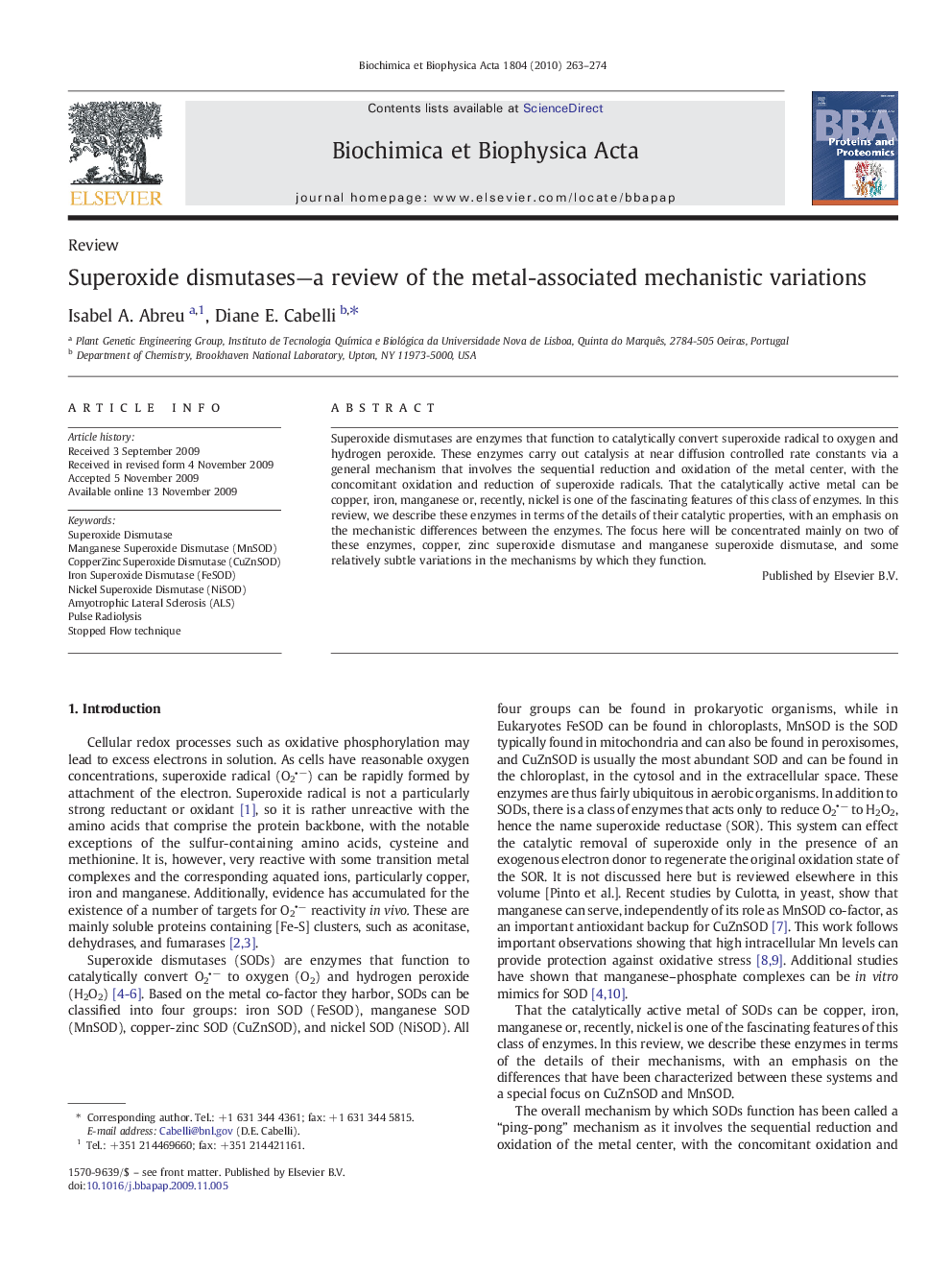| کد مقاله | کد نشریه | سال انتشار | مقاله انگلیسی | نسخه تمام متن |
|---|---|---|---|---|
| 1178256 | 962678 | 2010 | 12 صفحه PDF | دانلود رایگان |

Superoxide dismutases are enzymes that function to catalytically convert superoxide radical to oxygen and hydrogen peroxide. These enzymes carry out catalysis at near diffusion controlled rate constants via a general mechanism that involves the sequential reduction and oxidation of the metal center, with the concomitant oxidation and reduction of superoxide radicals. That the catalytically active metal can be copper, iron, manganese or, recently, nickel is one of the fascinating features of this class of enzymes. In this review, we describe these enzymes in terms of the details of their catalytic properties, with an emphasis on the mechanistic differences between the enzymes. The focus here will be concentrated mainly on two of these enzymes, copper, zinc superoxide dismutase and manganese superoxide dismutase, and some relatively subtle variations in the mechanisms by which they function.
Journal: Biochimica et Biophysica Acta (BBA) - Proteins and Proteomics - Volume 1804, Issue 2, February 2010, Pages 263–274